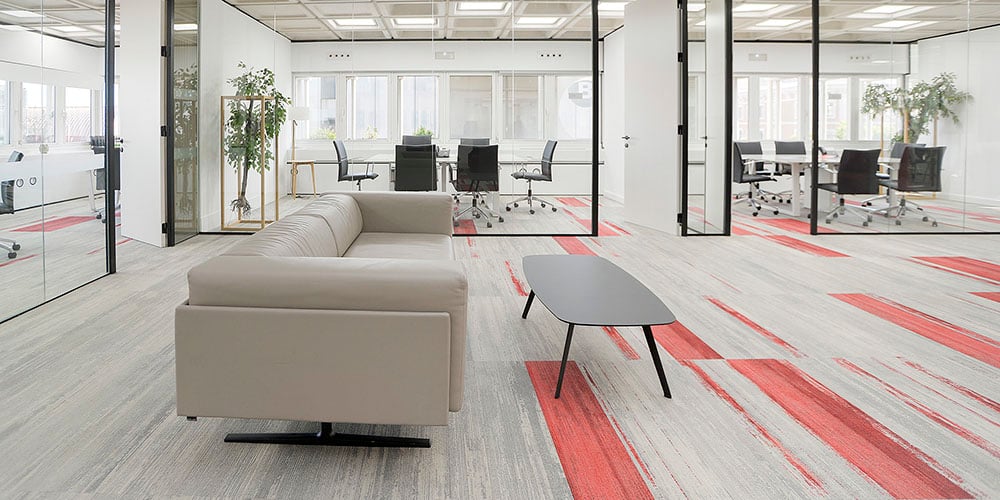Before you start work on your next commercial project, it’s important to understand that the flooring you specify will impact your client’s experience of using their redesigned space, every single day.
Today, I’m identifying some of the most common problems your clients may want to address by redesigning their commercial space, and sharing the best types of flooring to specify to solve these problems for your clients.
Understanding Your Client’s Needs
To select the best carpet tiles for your next commercial flooring project, you need to have a clear understanding of what your client needs from the redesign of their space.
You should take some time to understand what their existing space is like to work in, as well as what would improve their working environment. What are their biggest problems: are they struggling to manage rising noise levels or maxing out their budget with prohibitively high maintenance costs?
Once you understand the big problems your client needs to solve with their redesign, you can be sure that you’re specifying the best flooring for the unique needs of their organisation.

Addressing the Most Common Problems
1) Acoustics
High noise levels are one of the leading causes of complaints in the workplace, and the ever-popular open-plan office trend makes noise levels a growing problem. If you take out the walls to create a bright and open collaborative workspace, there will be nothing to block sound and it will reverberate throughout the space.
With high background noise levels linked to increased stress and decreased productivity levels, it’s important to specify carpet with the best acoustic properties. The backing of your carpet tiles makes the biggest difference to its sound absorption qualities: carpet with open-cell cushion backing absorbs 40–50% more sound than a comparable carpet with hard backing.
2) Installation Budget
There’s more to the cost of flooring than purchase price alone. What sort of budget does your client have for installation and ongoing maintenance?
If (like many organisations) you’re operating to a fixed budget for flooring installation, choosing one type of carpet tile over another could equate to an unnecessary overspend per square metre installed. Carpet tiles with an open-cell cushion backing make it possible to install directly onto existing adhesive, without the need for extensive (and expensive) floor preparation. Over your entire installation, that quickly adds up to a huge cost saving. Milliken's TractionBack® 2.0 adhesive free installation system can add even more convenience, removing the need for any adhesive during the installation process.
Similar principles apply to the costs of ongoing maintenance: even within the same types of flooring, the quality of products can vary hugely, creating massive variations in maintenance spend from product to product.
3) Underfoot Comfort
If your client’s workforce contains a number of workers who spend a large portion of their time on their feet – such as staff at a reception desk, or even people who engage in sit-to-stand working, changing their posture several times throughout the day – then underfoot comfort should be one of their top priorities.
Just like seated workers use ergonomic chairs to improve comfort and posture, you want to provide the right support for standing workers, to reduce muscle strain and fatigue, and improve comfort levels.
Fortunately, your choice of carpet can have a huge impact here. Cushion-backed carpet can reduce muscle strain and fatigue by up to 24%, which will make a big difference to your client’s standing employees.
Never make a flooring specification mistake, download our free guide now!







